 Few things can irritate as much as elevated indoor humidity. HVAC systems may be designed to give us a high degree of comfort throughout the year, but humidity can, nevertheless, soar during summer.
Few things can irritate as much as elevated indoor humidity. HVAC systems may be designed to give us a high degree of comfort throughout the year, but humidity can, nevertheless, soar during summer.
The majority of digital thermostats provide users the ability to control humidity. However, correctly programming them is something that most people have yet to master. It would be best to let trained HVAC technicians deal with humidity control in homes and commercial establishments.
Lower Humidity In House: Why Does My House Feel So Humid?
HVAC technicians can perform every technique available to lower the household humidity. They can also observe and inspect all areas of the home to come up with additional recommendations. HVAC maintenance, for example, is a crucial strategy that you should not miss. Below is a list of the things that you can do to minimize excess moisture in your property:
How You Can Utilize Fans To Lower Humidity
- Lower Humidity In House: Why Does My House Feel So Humid?
- How You Can Utilize Fans To Lower Humidity
- How Good Ventilation Can Lead To A Drop In Humidity
- Cold Showers As A Humidity-Control Strategy
- Installation Of Home Dehumidifiers
- Improving Comfort Levels By Using The Air Conditioner
- Schedule HVAC Maintenance & Inspections Regularly
The problem with elevated humidity is that it negates the cool temperatures and makes it hard to sleep. You can even suffer from frizzy hair and too much sweat. As for the house, you might see faster growth rates for mold and mildew. This issue is not good news for family members that have existing respiratory ailments and related problems.
One way to fight this is to let the ceiling fan run in your bedroom at night. As the blades spin, they will encourage air circulation, which should make the room feel cooler. Using a fan will also have an evaporative effect on moist areas such that they will dry up quickly. Without stale air, the fungus will have a harder time growing and spreading. Fans are economical additions with multiple benefits that you should install in most rooms.
How Good Ventilation Can Lead To A Drop In Humidity
 Improper ventilation is one of the common causes of high humidity. Technicians may be called in to inspect the air conditioning system and see if the air is flowing smoothly across the lines. Sometimes the problem can be traced to an obstacle in the HVAC ducts such as dirt and debris. The techs should also see to it that the moisture-prone areas like the bathrooms and kitchen vent air outside directly instead of pushing air to the attic.
Improper ventilation is one of the common causes of high humidity. Technicians may be called in to inspect the air conditioning system and see if the air is flowing smoothly across the lines. Sometimes the problem can be traced to an obstacle in the HVAC ducts such as dirt and debris. The techs should also see to it that the moisture-prone areas like the bathrooms and kitchen vent air outside directly instead of pushing air to the attic.
If there are ventilation fans, then turning them on would be a good idea. You can also do simple things like opening doors and windows to let air circulate around an area. This should help with cross-ventilation in which old air and humidity get expelled while fresh air comes in. This is a good method to use when you want to get rid of excess moisture and prevent mold growth. Do it in the laundry room and shower areas.
Cold Showers As A Humidity-Control Strategy
Moisture control does not have to be complicated as you can do it by switching from hot to cold showers. You should also shorten the duration as much as possible. Many prefer hot showers because of their ability to make us feel relaxed. However, they have the side effect of increasing humidity levels in the home. The steam generated can absorb moisture and heat up the area. Cold showers have the opposite effect on moisture. It can also refresh and recharge. Once you’re done, leave the door open for added effect.
Installation Of Home Dehumidifiers
If you want extra help, then you could install a standalone dehumidifier inside the household. These will keep the room cool while extracting the moisture out of the indoor air. An HVAC contractor can assist you in finding a suitable unit for your needs.
Improving Comfort Levels By Using The Air Conditioner
 Air conditioners have the ability to cool down spaces and lower indoor humidity. Although they can run at any hour of the day, it is advised to turn the AC on early in the morning to have a headstart in reducing humidity. Otherwise, it might just build up to intolerable levels later in the day. Maintaining a certain level is easier than attempting to reduce humidity.
Air conditioners have the ability to cool down spaces and lower indoor humidity. Although they can run at any hour of the day, it is advised to turn the AC on early in the morning to have a headstart in reducing humidity. Otherwise, it might just build up to intolerable levels later in the day. Maintaining a certain level is easier than attempting to reduce humidity.
Homeowners should always ensure that the AC units are running at the right temperature and actively lessening moisture in the air. The digital thermostat can show you what the humidity reading is at any point. If yours doesn’t have one, then have it replaced right away.
Schedule HVAC Maintenance & Inspections Regularly
Although HVAC systems and dehumidifiers are known to be highly reliable equipment, they too can fail due to stress and other issues. Their absence will trigger a sudden surge in heat and humidity until competent HVAC technicians repair the machines.
You could reduce the risk of failure by scheduling maintenance service two times a year. Techs will check the system to spot developing problems and implement fixes before they get worse. They will also perform any necessary procedure such as refrigerant recharge, air leak sealing, and so on.
Call a local HVAC contractor for best results. Contact various candidates to ask about humidity reduction strategies. They should be able to answer pertinent questions with ease.
Conclusion
Skylands Energy Service has NATE-certified technicians who are both competent and friendly. Our expert technicians can demonstrate their skills and experience through their work on your system. You are sure to be satisfied with their speed, proficiency, and professionalism.
Allow us to take care of your HVAC system maintenance, installation, and repairs. With our help, you can look forward to reliable and efficient systems that provide excellent air quality. Our rates are on par with the industry standards. Call Skylands Energy Service today for a free consultation!
Contact us now at (908) 707-1776 to find out more!
The post Simple Methods To Reduce The Humidity Levels In Your Home appeared first on Skylands Energy.
from Skylands Energy https://www.skylandsenergy.com/indoor-air-quality/lower-humidity-in-house/
via IFTTT
 When home air conditioners break down, the cost of
When home air conditioners break down, the cost of 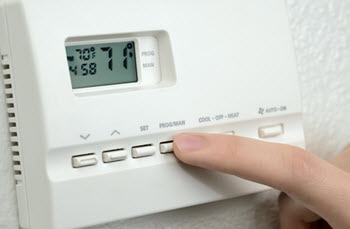 Thermostats can go off-calibration and begin turning off or on erratically. When this happens, the air conditioning system may stop turning on when it is supposed to. The thermostat is responsible for keeping the home at the right temperature. Therefore, when your thermostat stops working as it should, you need to contact an HVAC technician to recalibrate it or replace it if necessary.
Thermostats can go off-calibration and begin turning off or on erratically. When this happens, the air conditioning system may stop turning on when it is supposed to. The thermostat is responsible for keeping the home at the right temperature. Therefore, when your thermostat stops working as it should, you need to contact an HVAC technician to recalibrate it or replace it if necessary. Air conditioning units have two primary fans, one located in the outdoor condenser unit and one found in the air handler. If either of these fans malfunction it will prevent your home from being cooled. Regular lubrication and cleaning of your AC fans by a reliable
Air conditioning units have two primary fans, one located in the outdoor condenser unit and one found in the air handler. If either of these fans malfunction it will prevent your home from being cooled. Regular lubrication and cleaning of your AC fans by a reliable  Every pet owner understands the joy of having a beloved, furry companion around the home. Domesticated animals can help people in a variety of ways and most households treat their pets like family. Pets can boost anyone’s mood, alleviate stress, and induce laughter.
Every pet owner understands the joy of having a beloved, furry companion around the home. Domesticated animals can help people in a variety of ways and most households treat their pets like family. Pets can boost anyone’s mood, alleviate stress, and induce laughter.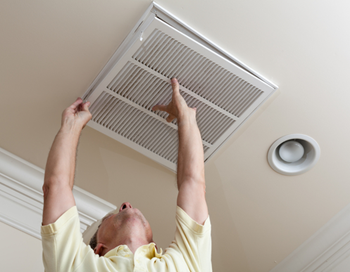 HVAC systems use their filters to block impurities, dirt, and other particulates. As such, the surface of HVAC filters tend to get quite dirty over time. Depending on the kind of filter that your system requires, homeowners are advised by HVAC manufacturers to replace these removable components or clean them every few months. Keep in mind that this estimate of the frequency of filter replacements is for average system users and doesn’t account for things like household pets. Instead of hastily accepting this schedule as being best for you, you should check the state of your filter about once a week to every two weeks. This will help you determine the frequency for filter replacements. For instance, some homes might require filter changes once per month, while another home might be able to do this just once every three months.
HVAC systems use their filters to block impurities, dirt, and other particulates. As such, the surface of HVAC filters tend to get quite dirty over time. Depending on the kind of filter that your system requires, homeowners are advised by HVAC manufacturers to replace these removable components or clean them every few months. Keep in mind that this estimate of the frequency of filter replacements is for average system users and doesn’t account for things like household pets. Instead of hastily accepting this schedule as being best for you, you should check the state of your filter about once a week to every two weeks. This will help you determine the frequency for filter replacements. For instance, some homes might require filter changes once per month, while another home might be able to do this just once every three months.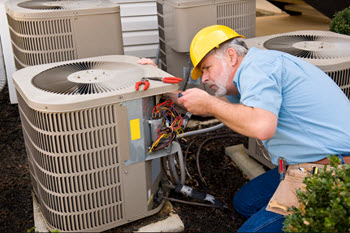 Last, it is prudent for homeowners to set up annual HVAC inspections and tune-ups. The cooling portion of this system can be serviced each spring, ahead of any significant spike in temperatures. The heating portion should be tuned up in autumn before the weather becomes severely cold.
Last, it is prudent for homeowners to set up annual HVAC inspections and tune-ups. The cooling portion of this system can be serviced each spring, ahead of any significant spike in temperatures. The heating portion should be tuned up in autumn before the weather becomes severely cold. 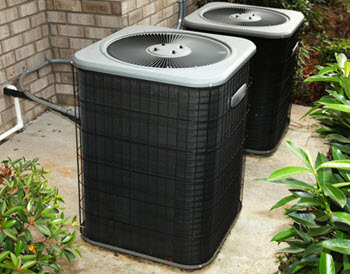 Although no appliance lasts forever, it is possible to increase the longevity of some if you take the right steps. This is certainly the case with cooling and heating systems. Such HVAC systems can easily last up to 15 years or longer. However, the care that you invest in them makes all of the differenece in the world.
Although no appliance lasts forever, it is possible to increase the longevity of some if you take the right steps. This is certainly the case with cooling and heating systems. Such HVAC systems can easily last up to 15 years or longer. However, the care that you invest in them makes all of the differenece in the world.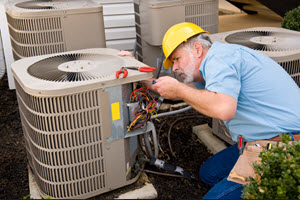 Continuous maintenance is essential to prolong the life of any appliance or system. For this reason, homeowners should make sure that an HVAC contractor cleans their HVAC units regularly. It is also important to change air filters when necessary before they become clogged with dirt and debris.
Continuous maintenance is essential to prolong the life of any appliance or system. For this reason, homeowners should make sure that an HVAC contractor cleans their HVAC units regularly. It is also important to change air filters when necessary before they become clogged with dirt and debris. Overstressing an HVAC system can also lead to its early demise. If it must labor harder than it should have to, its lifespan will almost certainly be shorter than average. Although you have the option of setting the air conditioner at an extremely low temperature, this is not always a wise course of action. Similarly, just because you can turn your heat up to the maximum setting, does not mean it is something you should do regularly. On the contrary, the majority of the time you should set the thermostat at a moderate temperature so that the unit can create a comfortable home environment without laboring too long or too hard.
Overstressing an HVAC system can also lead to its early demise. If it must labor harder than it should have to, its lifespan will almost certainly be shorter than average. Although you have the option of setting the air conditioner at an extremely low temperature, this is not always a wise course of action. Similarly, just because you can turn your heat up to the maximum setting, does not mean it is something you should do regularly. On the contrary, the majority of the time you should set the thermostat at a moderate temperature so that the unit can create a comfortable home environment without laboring too long or too hard. As
As 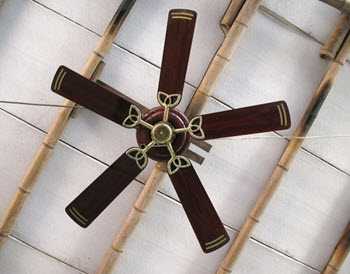 Ceiling fans help bring down temperature through convection. Convection refers to the transfer of thermal energy from the source to another location. When ceiling fans are turned on, the movement of the blades moves air, cooling the skin through evaporation. Therefore, when you use a ceiling fan on a warm day, you will feel cool even if air temperature does not change.
Ceiling fans help bring down temperature through convection. Convection refers to the transfer of thermal energy from the source to another location. When ceiling fans are turned on, the movement of the blades moves air, cooling the skin through evaporation. Therefore, when you use a ceiling fan on a warm day, you will feel cool even if air temperature does not change.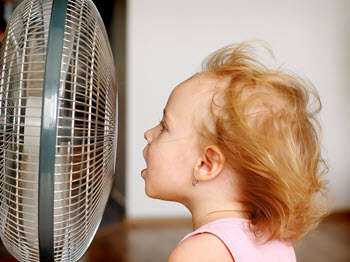 A ceiling fan relies on the efficiency of the blades to operate well. If your ceiling fan has more blades, it will move the air more slowly because of the weight of the blades. More blades will help the fan turn quietly but the weight will reduce air flow. The size of the fans will also affect air flow. Larger fans, for example, can make air flow better. In standard rooms of 144 sq.ft. to 225 sq.ft., the best ceiling fan size is a 44-inch unit. This should ensure that the room has even temperature throughout.
A ceiling fan relies on the efficiency of the blades to operate well. If your ceiling fan has more blades, it will move the air more slowly because of the weight of the blades. More blades will help the fan turn quietly but the weight will reduce air flow. The size of the fans will also affect air flow. Larger fans, for example, can make air flow better. In standard rooms of 144 sq.ft. to 225 sq.ft., the best ceiling fan size is a 44-inch unit. This should ensure that the room has even temperature throughout.